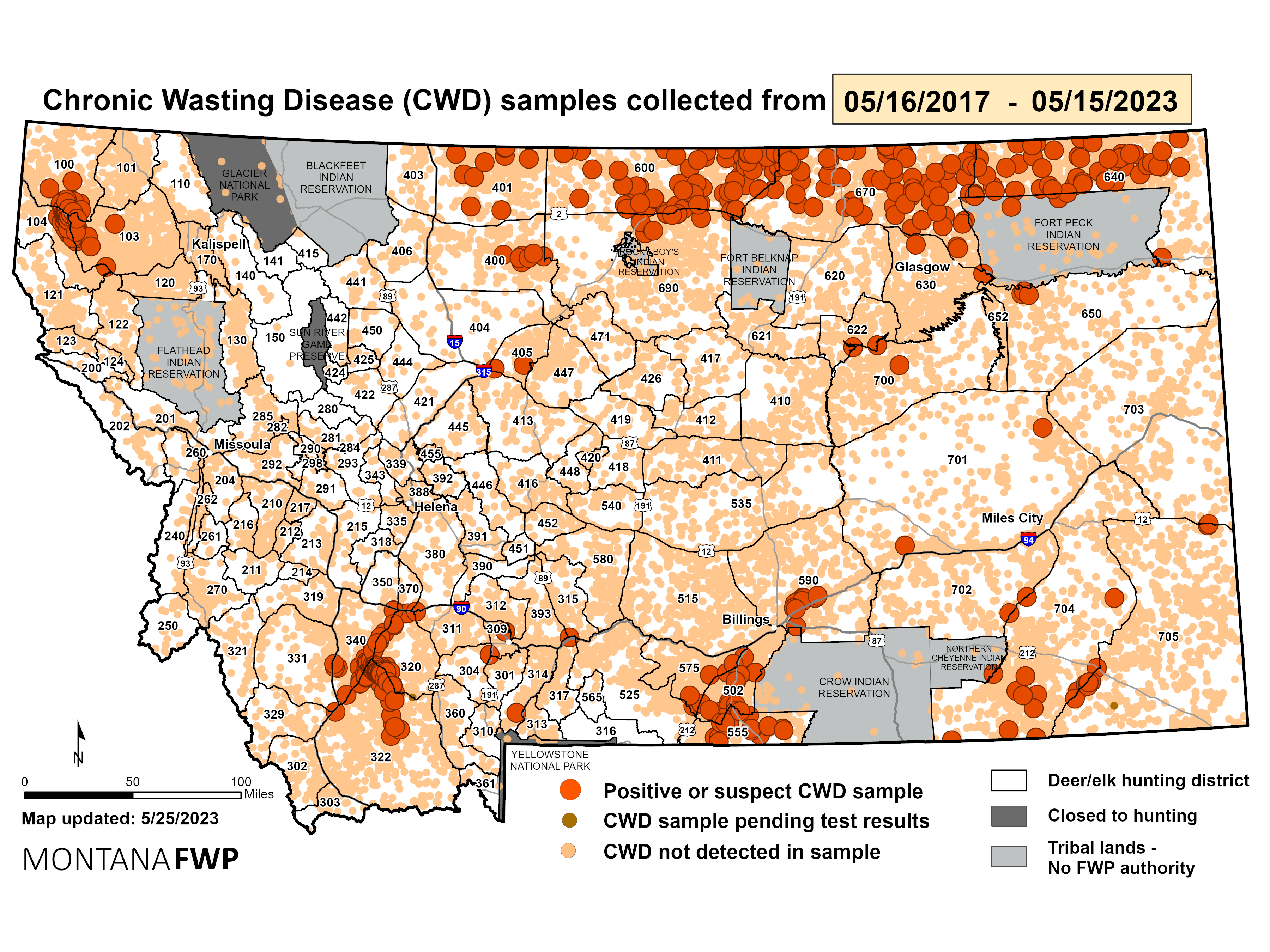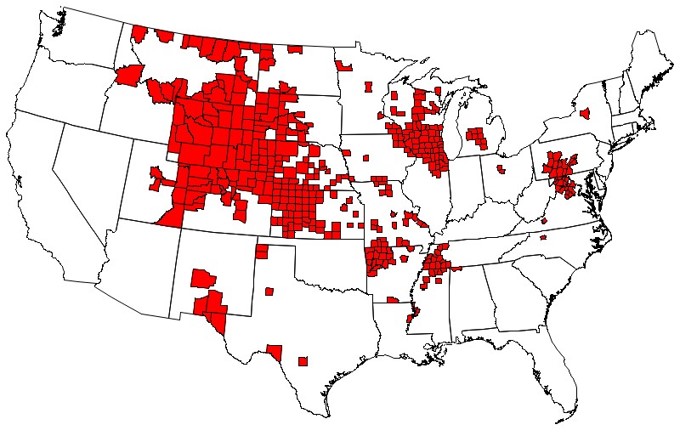Chronic Wasting Disease (CWD)

What You Need to Know
Chronic wasting disease (CWD) is a chronic and fatal neurodegenerative disease that affects cervids, including mule deer, white-tailed deer, elk and moose. This disease belongs to a family of disease referred to as Transmissible Spongiform Encephalopathies (TSEs). Research suggests that TSEs are caused by an infectious, misfolded protein called a prion. Prions appear to convert normal proteins into an abnormal form that accumulates in the brain, destroying normal tissue, and eventually causing the brain to have a “spongy” appearance.
There are no reported cases of CWD infection in humans through consumption of infected meat. Hunters must consider many factors when determining whether to eat meat from deer and elk harvested from areas with CWD, including the level of risk they are willing to accept. In areas where CWD is known to be present, CDC recommends that hunters strongly consider having those animals tested before eating the meat.
- Do not shoot, handle or eat meat from deer and elk that look sick or are acting strangely or are found dead (road-kill).
- Check FWP guidance to see whether testing of animals is recommended or required.
- Wear latex or rubber gloves when dressing the animal or handling the meat.
- Minimize how much you handle the organs of the animal, particularly the brain or spinal cord tissues.
- Do not use household knives or other kitchen utensils for field dressing.
- Strongly consider having the deer or elk tested for CWD before you eat the meat.
- If you have your deer or elk commercially processed, consider asking that your animal be processed individually to avoid mixing meat from multiple animals.
- If your animal tests positive for CWD, do not eat meat from that animal.
- Please visit FWP's website for more information on this topic
CWD in Montana
CWD has been detected in multiple regions of Montana. The Montana Department of Fish, Wildlife, and Parks (FWP) is performing surveillance for CWD in free-ranging wildlife. Prior to November 2017, the only documented emergence of CWD in Montana was detected in a captive game facility near Philipsburg, MT in 1999. That facility was depopulated and has remained vacant. Surveillance for CWD is ongoing. The current CWD management zones can be found on the FWP website.
Figure 1. Chronic Wasting Disease samples collected from 05/16/2017-05/15/2023

Figure 2. Chronic Wasting Disease Among Free-Ranging Cervids by county, United States, June 2022


